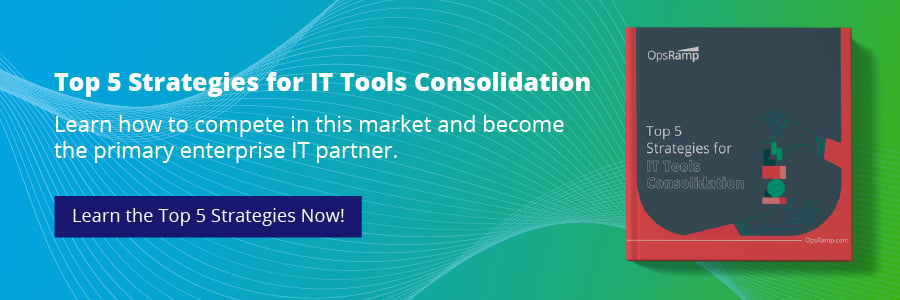In recent years, hybrid cloud environments have emerged as a popular, if not de facto, choice for many organizations seeking flexibility, scalability, and security in their IT infrastructure. Industry research firm Mordor Intelligence pegs hybrid cloud as a nearly $130bn market in 2024, growing at a better than 22% clip over the next five years.
We define hybrid cloud at Hewlett Packard Enterprise as a combination of public cloud and private cloud computing resources, including edge locations and on-premises data centers. Data and information are shared and synchronized across these resources by deploying integration, orchestration, and coordination techniques. Networking technologies such as LAN (Local Area Network), WAN (Wide Area Network), VPN (Virtual Private Network), and APIs (Application Programming Interfaces) are used to establish the connectivity between the various cloud environments an organization uses.
By blending public and private cloud solutions, IT organizations can create a unified computing infrastructure that allows them to maintain control over sensitive data on-premises while taking advantage of the scalability of the public cloud. It’s a powerful approach but one that comes with its own challenges and complexities.
Let’s look at both the top five benefits and challenges of hybrid cloud.
Benefits:
- Cost Efficiency - By utilizing a hybrid cloud model, organizations can optimize costs by allocating resources efficiently based on their importance and sensitivity. They can take advantage of the cost-effectiveness of public cloud services for non-sensitive workloads while maintaining critical data and applications on a secure private cloud infrastructure.
- Scalability - Hybrid cloud environments enable seamless scalability by allowing organizations to scale resources up or down based on demand. This scalability is particularly useful for organizations experiencing fluctuating workloads such as seasonal spikes in demand or overall rapid growth.
- Flexibility - Hybrid cloud allows organizations to leverage the benefits of both public and private clouds. It offers the flexibility to choose where to host different workloads based on their specific requirements, whether it's for regulatory compliance, performance optimization, or cost-effectiveness.
- Enhanced Security - Hybrid clouds offer a balanced approach to security. Organizations can keep sensitive data and mission-critical applications on-premises or in a private cloud environment, ensuring greater control and compliance with regulatory requirements, while still benefiting from the security measures provided by reputable public cloud providers.
- Disaster Recovery and Business Continuity - Hybrid cloud architectures facilitate robust disaster recovery and business continuity strategies. Organizations can replicate data and applications across multiple cloud environments, ensuring redundancy and minimizing the risk of data loss or downtime.
Challenges:
- Increased Complexity - Managing a hybrid cloud environment can be more complex and challenging. It requires in-house (or outsourced) expertise in integrating and orchestrating services across different cloud platforms, as well as ensuring seamless connectivity and data consistency between on-premises infrastructure and public cloud services. Hybrid clouds typically require virtualization, containerization, storage tools and software-defined networking to access and accumulate resources.
- Integration and Interoperability - Integrating existing IT systems and applications with hybrid cloud environments can be challenging. Compatibility issues, data migration complexities, and interoperability challenges often arise when integrating legacy systems with modern cloud technologies, such as containers or serverless environments.
- Data Governance and Compliance - Compliance requirements and data governance can also become more complicated in hybrid cloud environments. Organizations need to navigate various regulatory frameworks and ensure that their data management practices comply with industry standards and legal obligations across different cloud environments and geographies or countries.
- Dependency on Network Connectivity - Hybrid cloud environments heavily rely on network connectivity. Any disruptions or latency issues in network infrastructure can impact the performance and availability of applications and services hosted across different cloud environments.
- Potential Vendor Lock-in - Organizations adopting hybrid cloud could also face vendor lock-in risks, especially when relying on proprietary technologies or services offered by specific cloud providers. Switching between cloud providers or migrating workloads across cloud providers’ environments can be time-consuming, error-prone and costly.
While hybrid cloud environments offer compelling benefits such as flexibility, scalability, and enhanced security, they can also present notable challenges related to complexity, data governance, integration, and vendor lock-in. The successful implementation and management of a hybrid cloud requires careful planning, ongoing monitoring, and collaboration between IT teams and cloud service providers to both mitigate risks and optimize performance.
OpsRamp, a Hewlett Packard Enterprise company, offers a comprehensive solution to simplify and streamline IT operations to help you better manage your hybrid cloud environment. OpsRamp is a true multi-tenant, multi-tier SaaS platform that helps enterprise IT teams manage the complexity of hybrid, multi-cloud, and cloud native infrastructure, as well as traditional workloads from datacenters, edge locations, servers, and virtualization.
With its unified visibility, hybrid observability, AIOps, automation, and governance features, OpsRamp empowers organizations to overcome the complexity of managing hybrid cloud environments and drive greater business agility.
To learn how OpsRamp can help you manage your hybrid cloud, please visit: https://www.opsramp.com/solutions/hybrid-observability/
Next Steps:
- Read the data sheet: OpsRamp Hybrid Cloud Management
- Read the press release: OpsRamp Powers VSO’s Hybrid, Multi-Cloud Management Services
- Read the Case Study: Tietoevry brings multi-cloud AIOps to Nordics with OpsRamp
- Schedule a custom demo with an OpsRamp solution expert.
- Follow OpsRamp on Twitter and LinkedIn for real-time updates and news from the world of IT operations.






